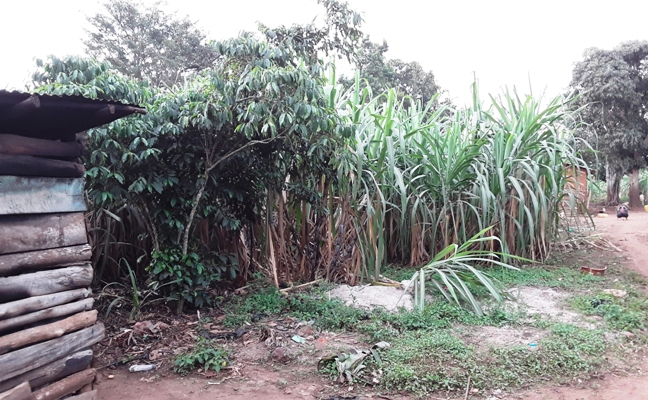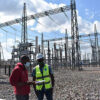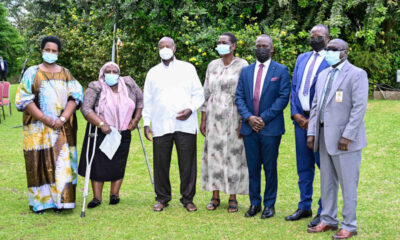Business
Sugar cane ‘curse’ spreads to Buganda

Wetlands in Mityana are steadly becoming sugar cane farms
Eucalyptus growing, which is regarded by some as a dangerous monoculture crop had colonised many plots across Mityana and surrounding districts in recent years. Now however, farmers, in their desperate fight to meet life’s needs are adopting perhaps a more dangerous crop – sugar cane – whose primary purpose in this part of the country is to produce Waragi.
David Musoke, a prominent businessman in Mityana town cut down his six-acre 10-year old eucalyptus plantation at Nambute, Miseese Bulera sub-county Mityana district, over a year ago to plant sugar cane.
He has replaced eucalyptus in two of his other relatively large Bibanja (pieces of land) located in Bulera sub-county in favour of sugar cane growing.
Why Sugarcane
Musoke told me recently that he had decided to shift from eucalyptus to sugar cane growing because of the laters lucrative nature.
“My son, let me tell you a secret. I have discovered something that many people don’t know. Wealth now is in sugar cane growing. One acre of sugar cane can give you up to 6 million shillings in a period of just 18 months (One and half years). You cannot get that money from eucalyptus or other agricultural ventures,” Musoke narrated.
In fact, it turns out that Musoke [not actual father of the writer] is not alone in taking to sugar cane farming. Moving across the sub-counties of Bulera, Maanyi, Kalangalo in Mityana district, reveals that the enterprise is gathering steam at unprecedented speed.
Two other men I spoke to from Kalangalo trading centre, expressed similar excitement about sugar cane growing. One of them told me, Sugar cane is unbeatable when one matches it’s economic benefit to eucalyptus.
Valleys and slopes are being cleared for sugar cane growing at a very fast rate, raising fear among some that the region may soon plunge into famine as the enterprise has taken up more land previously used for food production that is needed to feed a growing population in the district and the country as a whole.
Waragi brewing
Unlike in Busoga where sugar canes are grown primarily for sugar production, in Mityana, sugar canes are grown purposely for crude alcohol production commonly known as Waragi. A limited amount of the molasses produced from sugar cane, is sold to cattle keepers for preserving hay – (dried cattle pasture that is used to feed cattle during dry spells).
Naama village, which is located about five kilometres from Mityana along Mubende road, hosts two major Waragi factories. One of them makes two very popular brands known as Mood gin and Bobi. Another produces Ntungasaze and Yes Man gin. Several other alcohol producing factors have sprung up in the suburbs of Mityana.
Sales statistics from the alcohol-manufacturing factories are hard to obtain for obvious tax reasons. However judging by the rate at which their proprietors are amassing property, and expanding their businesses, one gets the sense that the products are a hot seller.
Damage to environment

Every available space is now utilised fro sugarcanes
Although sugar cane can do well at different altitudes, most farmers in Mityana and several other parts of Buganda have tended to concentrate their farms in wetlands and on river banks. It is no surprise therefore that some people are beginning to worry about the likely damage its growing may have on the environment and water sources for most rural communities as cane farmers vigorously push the boundaries of swamps.
For Deborah Kinobe, the former Chairperson of Mityana district, the concern over food security is real. She noted that while she would not discourage people from growing the crop, there is need for caution.
“People need to make sure that they balance sugar cane with food cultivation. People need to ensure they plant crops like Cassava that are drought tolerant,” she observed.
She also expressed concern over the way young boys are being diverted from school to go and work in the sugar cane value chain.
Paul Menyah a film-maker worries that it’s very difficult for the people of Buganda and other parts where sugar canes may spread, to escape their curse.
“Once they take root, they will be almost impossible to uproot, yet they will have done a lot of damage,” says Menyah.
Social-economic ‘curse’ or blessing?
The more Waragi brands have left the assembly lines of the mushrooming factories, the more people have shown readiness to embrace them, or so it seems.
For example, many have switched from drinking sodas and beers to Waragi, according to testimonies by some of the people I spoke with.
Many expressed the view that a bottle of Waragi is much better, and in some cases cheaper than a bottle of soda. Not only are people able to get intoxicated with Waragi, the high feeling comes so cheap at just UGX1,000 for a UGX250ml bottle. Price and relatively high alcohol content of most brands, have become major factors that have helped win customers over from bear and soft drinks.
Mass employer
Every cloud has a silver lining, so the saying goes. While some people have expressed concern about the the hazardous health effects of sugar cane growing arising from Waragi consumption, there are positives surrounding the business.
Martin Sserunyonyi, a resident of Naama testifies that the Waragi factories located in his area are easily the biggest employer in the Parish.
But some are beginning to ask questions whether the need for jobs is coming at a disproportionate cost to people’s health, environment and food security.
Among farmers and ordinary people, economic considerations are far more important to them for now. And for local leaders in the district, an enterprise that helps to line the pockets of their people, is welcome.
While comparing sugar cane and eucalyptus growing, Stephen Kabuye, a resident of Mpanga village in Mityana commented that: “Both crops are heavy feeders and they are mono cultures (meaning that they are grown in isolation of other crops).”
Generally however, discussions with ordinary people as well as district leaders, illustrate a lack of awareness of the scale of the challenge or may be the opportunity as well as the absence of policies by the district on how to regulate it as a way to lessen its potential adverse effects.
Some of the leaders I spoke to, declined to comment on whether the enterprise is a curse or blessing to the community.
“If handled properly, it can be a blessing but if mishandled, it can become a curse,” said one district development officer, who declined to be quoted.
But the not-so-pleasant experience of sugar cane growing in Busoga, coupled with the well documented impact of excessive alcohol consumption on people’s health and on draining the budgets of hospitals in treating alcoholics, calls for some urgent attention to the phenomenon.
Comments























